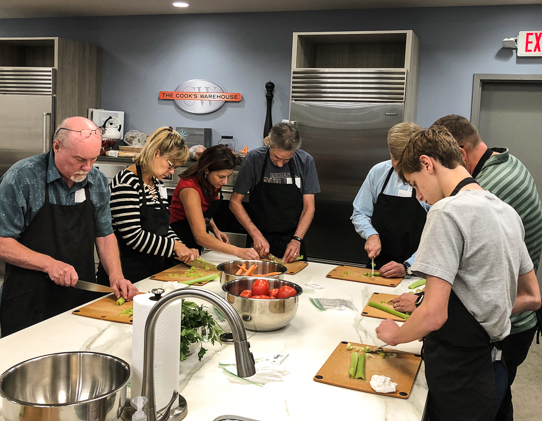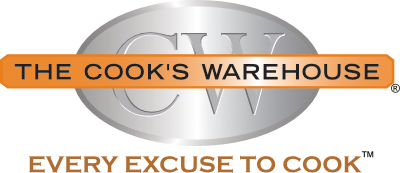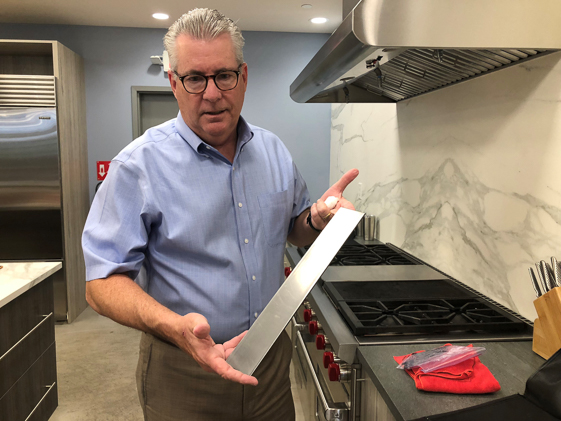
Wüsthof 101 with Clark Stone
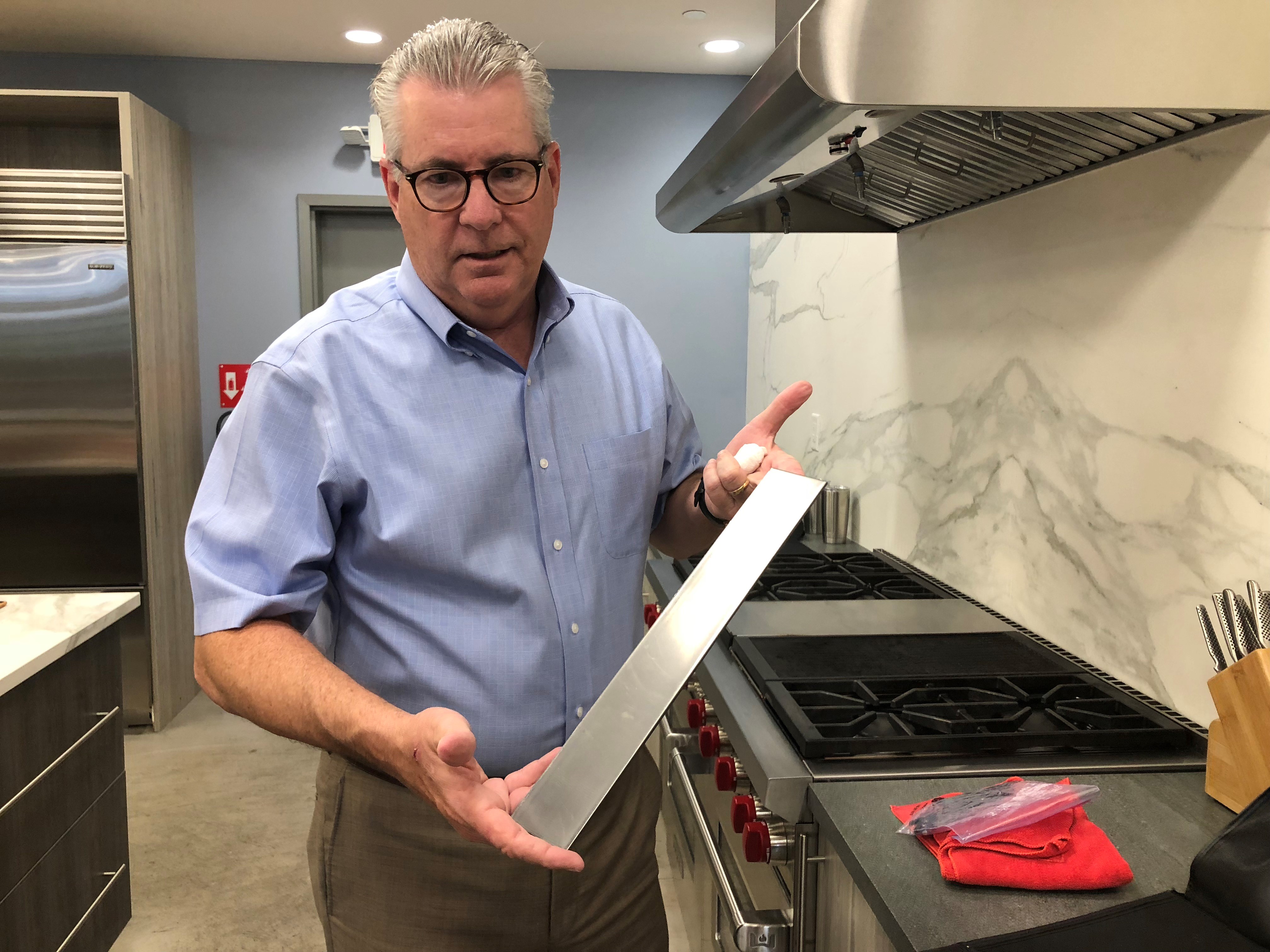
The Cook’s Warehouse recently had the pleasure of hosting Clark Stone, National Sales Director for Wüsthof. On this visit, Clark taught a hands on knife skills class at each of our stores. A part of the Wüsthof team since 1997, he teaches 60 to 70 knife skills classes each year. Given his high level of expertise, you can imagine our excitement to have him in our kitchens. We took some time to chat about blades, the Wüsthof brand, and Clark’s passion for keeping a sharp edge. I hope you enjoy:
Tell me more about the Wüsthof brand: A lot of people don’t realize Wüsthof is still owned and operated by the Wüsthof family. All of our production is still done in Solingen, Germany. We have been manufactured since 1814 in the Wupper River Valley, and all we produce is knives. Seven generations of Wüsthofs have continued to build upon the foundations set by those before them. There is a Mr. Wüsthof, there is a Mrs. Wüsthof, and we are getting ready for the eighth generation to grow up and start working in the factories and in the offices, and learning the business.
There is something a little different about Solingen and it’s called the Solingen Decree. Knives from Solingen are very much like the wines of Champagne, France. To be called Champagne, it has to be produced in that specific region, otherwise it is just sparkling wine. To say made in Soligen, there is a different standard of quality and cutting performance that has to be met, because the city of Soligen has such a worldwide reputation for steel manufacturing. More than 95 percent of the entire cost of the product must occur in the region to say Made in Soligen. We are very proud of that fact.
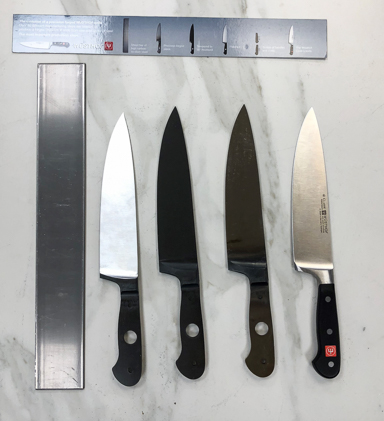
What makes a Wüsthof knife so special? Is it the steel itself, or the degree of the blade, or the weight of the handle? It’s all of the above. The Classic, Classic Ikon, Epicure, and Grand Prix are all examples of a forged knife. A forged knife is made from steel that has been heated and hammered and heated and hammered some more. This method realigns the molecular structure and makes it stronger and more resilient. It takes 40 different processes to make a Wüsthof forged knife from start to finish. And while much of the process is automated, there are still 300 workers in two separate factories who ensure that each knife is absolutely perfect. Every single knife has to meet rigorous standards before it leaves the factory.
I bought my first Wüsthof online before culinary school, when the internet barely existed. It’s what everyone said to get. I still love it, I still reach for it all the time. It cuts like the day I bought it! Wüsthof steel holds its edge very well, and if taken care of, can be passed down to another generation. Each knife goes through PEtec, a patented system of sharpening which stands for precision edge technology. The use of lasers, computers, and robotics ensures that each knife is sharpened evenly from tip to tip to meet strict specifications.
You mentioned a Wüsthof knife is sharpened to a 14-degree edge. I thought most German knives had a 20-degree edge? Our team actually did a substantial amount of testing to come up with that number. We discovered that when you take our steel to a Rockwell hardness of around 58 and put a 14-degree bevel on the edge, you get a tremendous amount of cutting out of the knife. At the same time it’s very easy to bring that sharpness back for the home chef. When you buy a knife with a high stainless-steel content (a grocery store knife, for example), it would be very difficult, if not impossible, to sharpen that knife. We prefer to make a knife you can sharpen and use time and time again. It’s not unusual to get 30 to 35 years out of a Wüsthof knife. I challenge you to find anything else you can buy for $150 that you can use everyday for 30 years.
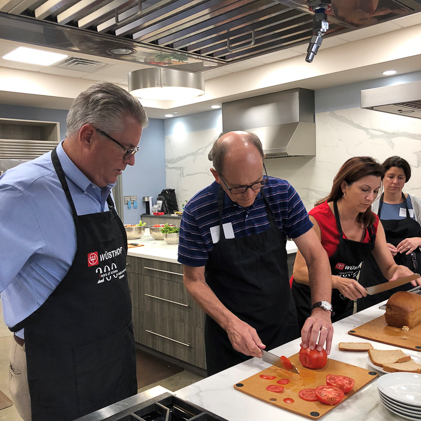
So I’ve just spent $150 on a knife. How do I take care of it? First, you need to pay attention to the material of your cutting board. The harder the surface you cut on, the faster that knife is going to go dull. Glass, marble, ceramic, these are the most detrimental to your knife edge. Wood is far and away a much better surface. As the knife hits the board, the edge rolls a little bit. Wood cushions the knife better.
What about keeping the knife sharp? Your knife is absolutely guaranteed to go dull, so it is imperative you properly maintain the blade. There are two ways to do this. One method is called honing, which maintains the edge that’s already on the knife, and another method is sharpening. Sharpening actually puts a new edge on the blade.
Honing your knife will realign the edge if it starts to feel a bit dull with regular use. I recommend purchasing a steel made by the same manufacturer as your knife. Knives have a specific hardness, and that steel has been matched to the hardness of the knife. So if you are going to use a Wüsthof knife, you should use a Wüsthof steel. Alternatively, you can use a ceramic steel, you can use a diamond steel, those are safe on any manufacturers’ knives.
The real key when honing a knife is angle control. Because this is hard for many consumers to gauge, most companies also offer a pull-through device. Ours has two settings, one for Asian knives and one for standard German knives. The advantage of a pull-through device is that the angle is already set. All you do is pull the knife through the guide rails, and it does the work for you. Three to four pulls on the course side, three to four pulls on the fine side and your knife should be ready to go.
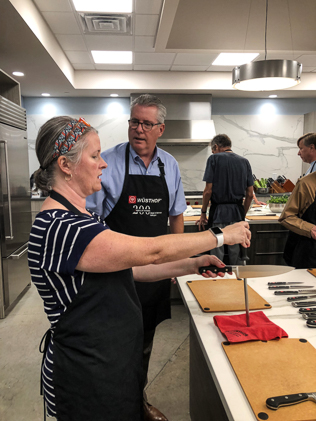
How often would you recommend using a honing steel and/or sharpener? Professional chefs are going to touch their knives up with a steel on a daily basis. If we could get our home cooks to do that once per week we would be way ahead of the ballgame. Most people wait until their knife is too dull to hone it, which by then won’t help very much. Alternatively, you can use the fine side of the pull-through device daily. When the fine side, which is ceramic, is not giving you the edge you would like, then you can use the course side to sharpen the edge, followed by the fine side to smooth it out.
What is your opinion on an electric sharpener? There are a couple of good ones. The Work Sharp is a good machine, the Chef’s Choice is another good one. The key is not to use these too much, only every six to nine months, otherwise you are going to take more metal off than necessary. The advantage is angle control – an electric sharpener works very fast and very efficiently. But you only want to use these once or twice a year max. It’s tempting to do it more, because once you’ve used a sharp knife you don’t want to go back to a dull knife.
How do you clean your knives? Always, always, always wash your knife by hand. Do not put it in a dishwasher. It can damage the knife, since the pressure of the water can bang it into other hard items in the washer. The high alkaline content of detergents can also be detrimental to the blade. Not to mention, it’s unsafe to unload sharp objects from the dishwasher. Don’t leave them in a sink of soapy water either, in case somebody else comes along and reaches into the sink. The best practice is to hand wash and dry a knife immediately after each use. Storage is also critical. You never want to store a knife loose in a drawer. It’s dangerous and terrible for the blade. Use a magnetic strip, a knife block, or a knife sheath. Anything to secure the edge.
I’ve decided to pull the trigger on a knife, and my next question is, with so many options out there, how do I pick the right one? A good store like The Cook’s Warehouse is going to ask you about the kind of food prep you do. An associate is going to pull a variety of knives based on your cooking style, and let you feel them all, let you test them all. There is no “best knife” here. It’s truly what feels right, and balanced, in your hand. The right knife is the one that is going to empower you to cook.
Would you recommend buying just one knife, or a block set? If you are only going to have one knife in the kitchen, it should be a chef’s knife. It’s the workhorse. Start with that, then supplement with a good pairing or utility knife, and a serrated knife. However, you are going to save money by buying a block set, and we try to configure ours to meet all your basic needs. Building your own set can be a fun way to explore various types of knives, but a block is definitely a great way to get started. But that’s the advantage of going to a store versus buying online. Somebody is going to be there to help you figure out your needs.
This is wonderful information, Clark! I have learned so much, and I think our blog readers will too.
If you are interested in taking your knife skills to the next level, sign up for one of our upcoming classes. Our professional chefs will have you slicing and dicing like a pro, and are excited to assist you with finding your perfect knife.
Knife Skills 101 Hands On
11/5/18 6:30-9:30pm East Cobb
11/13/18 6:30-9:30pm Midtown
